PHOTOS: Body Worlds Vital Opens at Faneuil Hall Marketplace in Boston
Update, April 10, 2014: Due to popular demand, the Body Worlds Vital exhibit will extend its stay at Faneuil Hall. The display will remain in Boston through September 14, 2014.
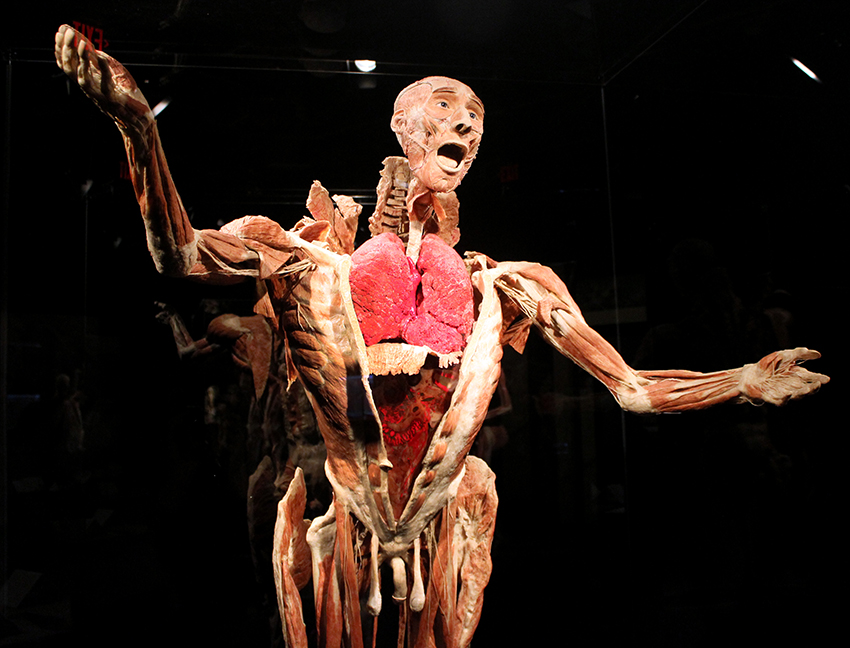
“The Singer,” a plastinate from the Body Worlds Vital exhibit, offers a simultaneous view of the front muscles of the torso and the internal organs. (Photo by Olga Khvan)
Body Worlds Vital, an exhibit that opens today at Quincy Market at Faneuil Hall Marketplace, grants the public an intensive look inside the human bodies through displays of 15 cadavers—all stripped of skin—and around 200 individual human specimens, many of them showing effects of various diseases. But its organizers insist that the focus of the exhibit is not death—it’s life.
“We’re not just talking about disease and fragility, but also the resilience of the body,” says Gail Vida Hamburg, Director of Science Communications and Exhibition Development. “It’s not about seeing dead bodies. Body Worlds Vital is a collaboration between the anatomist, the donor, and the visitor. As you walk through, you realize this is a conversation you’re having across time. These people are no longer with us, but they’re teaching us how to live.”
While plastination exhibits have been plagued with controversy over the origin of the bodies on display, Body Worlds Vital—created by Dr. Gunther von Hagens, the inventor of the plastination technique—remains the only one with an official body donation program, unlike its 19 “copycats,” according to Hamburg.
While developing the exhibit, Hamburg was touched by letters from donors who had been diagnosed with terminal illnesses. “I had those donors very much on my mind. We all should try to live with vitality, and the time to make changes is now,” she says.
The exhibit merely presents information, but a survey of visitors at 11 Body Worlds Vital venues worldwide (including four in the U.S.) suggests that it encourages people to make lifestyle changes. According to the Lantermann Survey, 68 percent of responders resolved to pay more attention to their physical health in the future, 24 percent indicated that they were more open to donating organs after seeing the exhibit, and 48 percent reported an increased appreciation for their bodies.
“People know very little about the effects of their choices, and what we want is to present the body as is—the wisdom of the body,” says Hamburg. “Our bodies are all we have. We carry our bodies and our bodies carry us. We are showing a way for people to see what we’re carrying inside us.”
Check out highlights from Body Worlds Vital here:
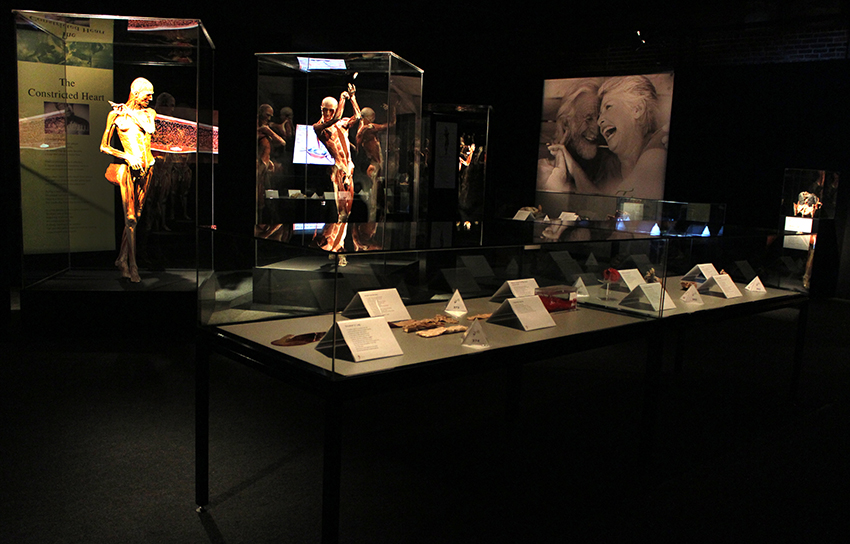
Photo by Olga Khvan
The Body Worlds Vital exhibit offers an intensive peek inside the human body with plastinated displays of entire human bodies, single organs, organ system and arterial configurations, and translucent slices.
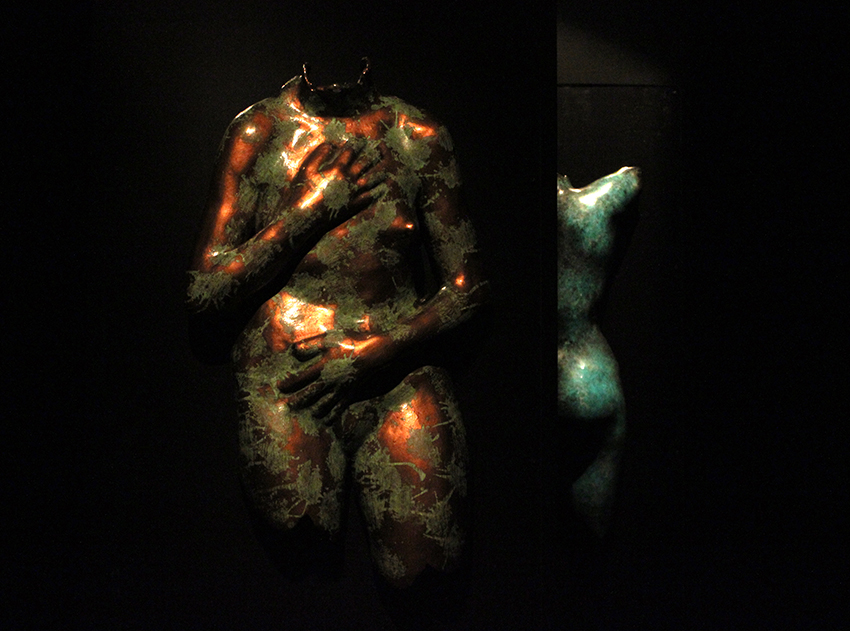
Photo by Olga Khvan
The only American “bodies” in the exhibit are body casts from late artist Larry Kirkwood’s “Glimpses” project. All of the real human bodies were acquired through the donation program at the University of Heidelberg in Germany, where Dr. Gunther von Hagens invented the plastination technique in the late 1970s.
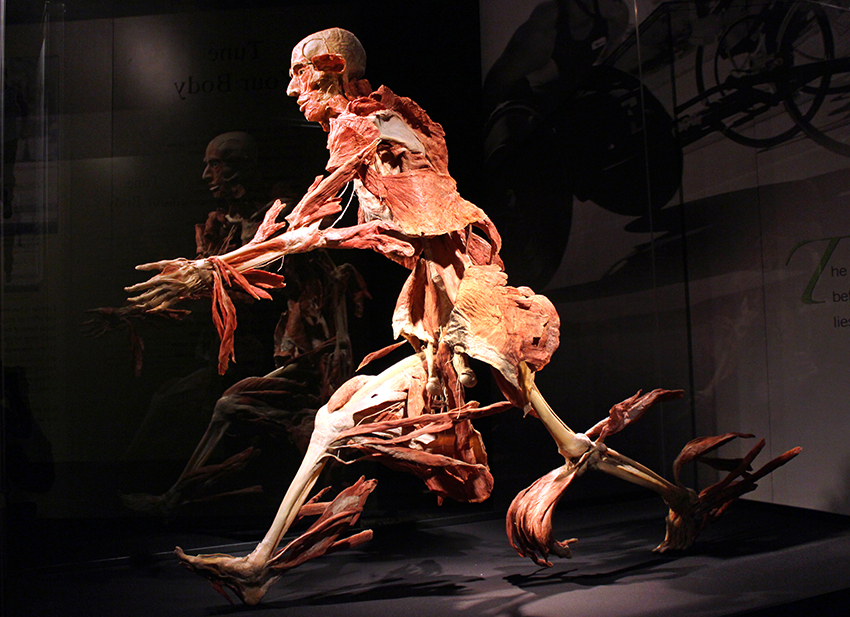
Photo by Olga Khvan
The muscles of “The Runner” were detached from their origins and folded back or sideways, resulting in a simultaneous view of the muscular and skeletal systems.
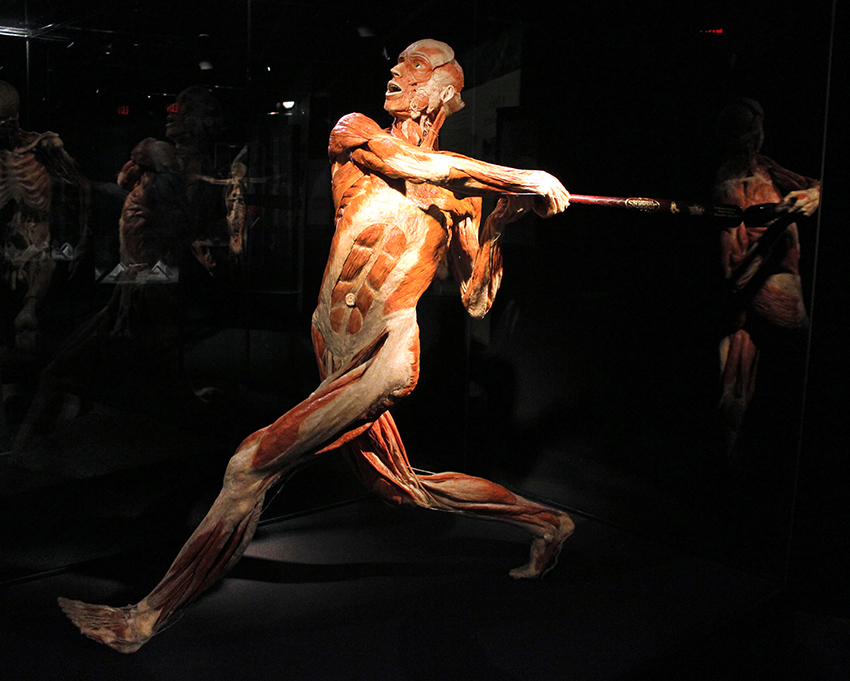
Photo by Olga Khvan
“The Baseball Player” demonstrates the movement of a healthy back with good spinal rotation and strong supporting muscles.
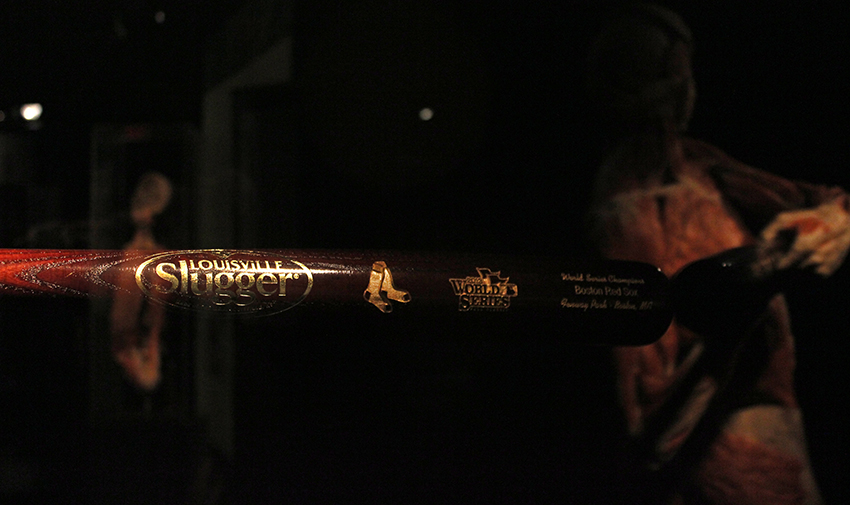
Photo by Olga Khvan
After the Red Sox clinched the World Series a few weeks ago, the “Baseball Player” was given a new bat to commemorate the victory.

Photos by Olga Khvan
The “Emerging Skeleton” presents a belief from the Middle Ages that corpses left their graves at night. The preparation of this plastinate emphasized the deep muscles of the back.
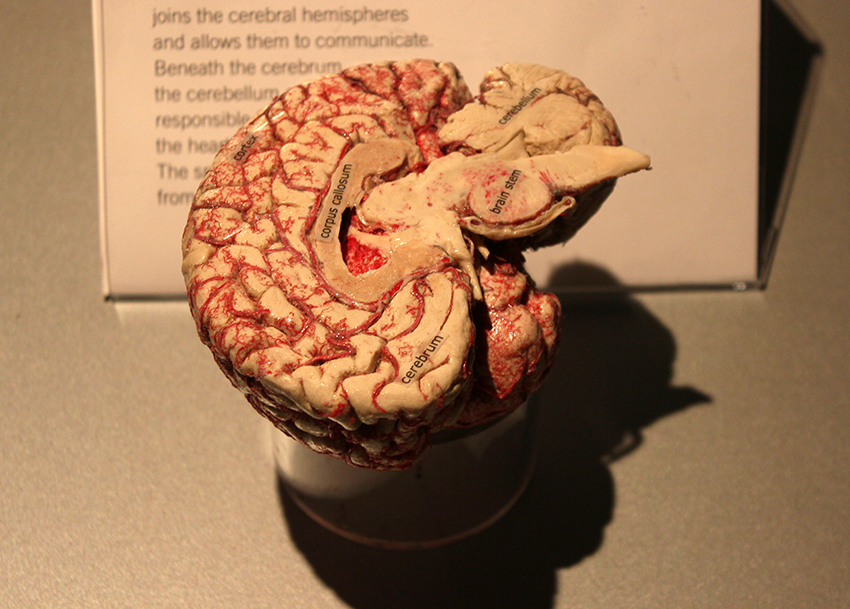
Photo by Olga Khvan
A plastinated right hemisphere of the brain, with labeled parts.
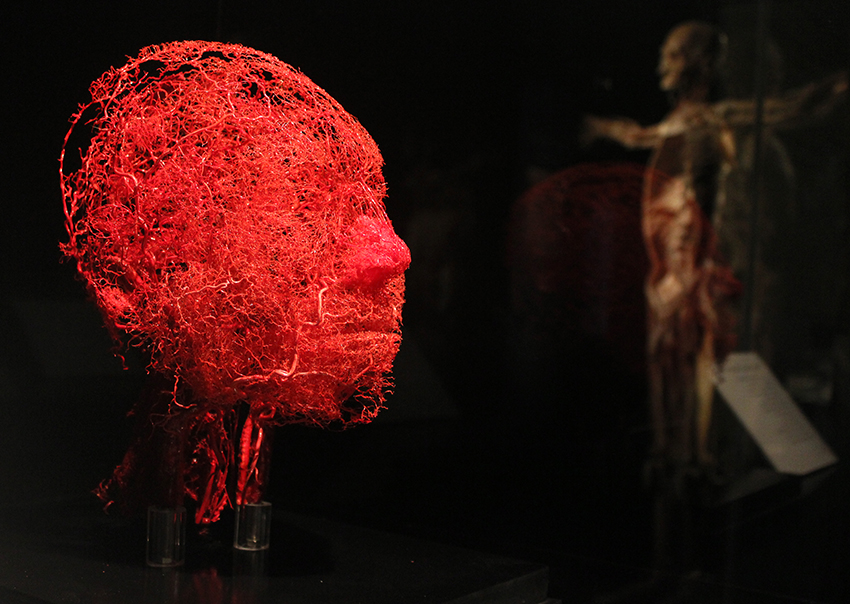
Photo by Olga Khvan
A display of the brain’s blood supply.
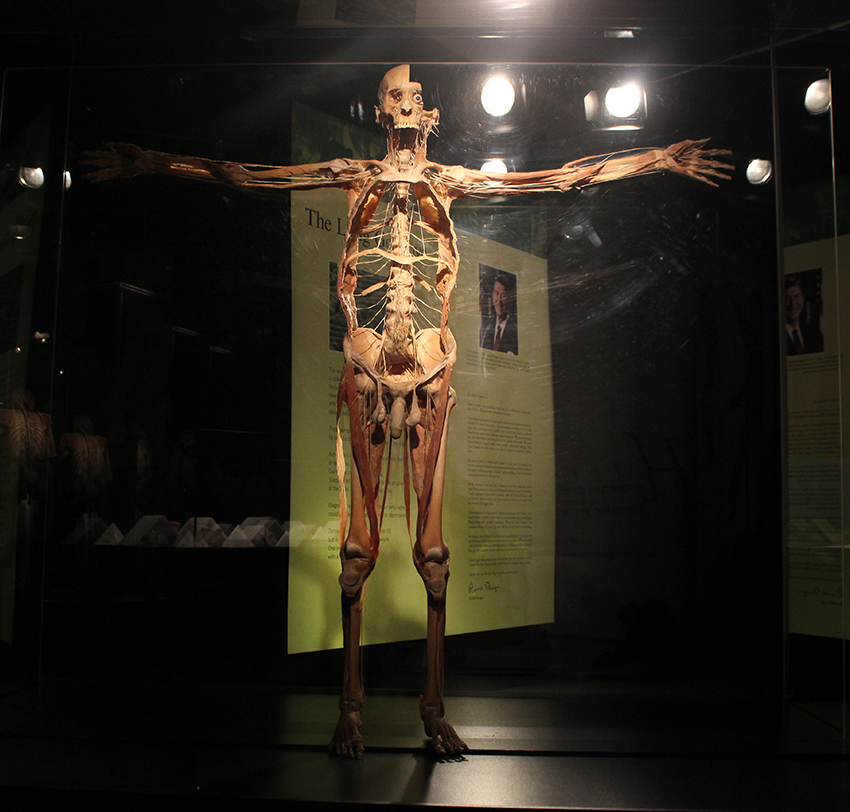
Photo by Olga Khvan
The “Nerve Leonardo” offers a clear view of the nervous system and its major branches.
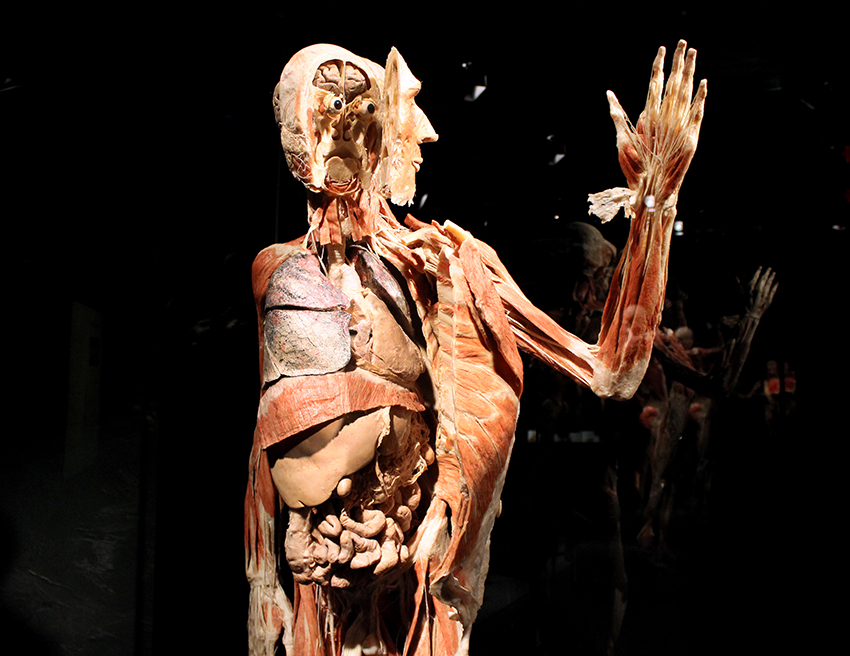
Photo by Olga Khvan
In the “Body of Open Doors,” the torso was folded back and the internal organs were turned out to offer a clear view of the body’s interior.
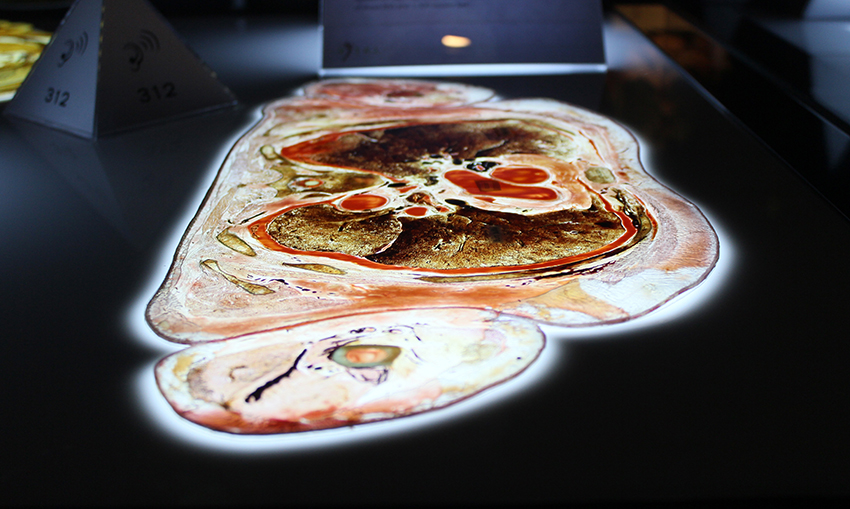
Photo by Olga Khvan
A cross-section of a healthy thoracic cavity…
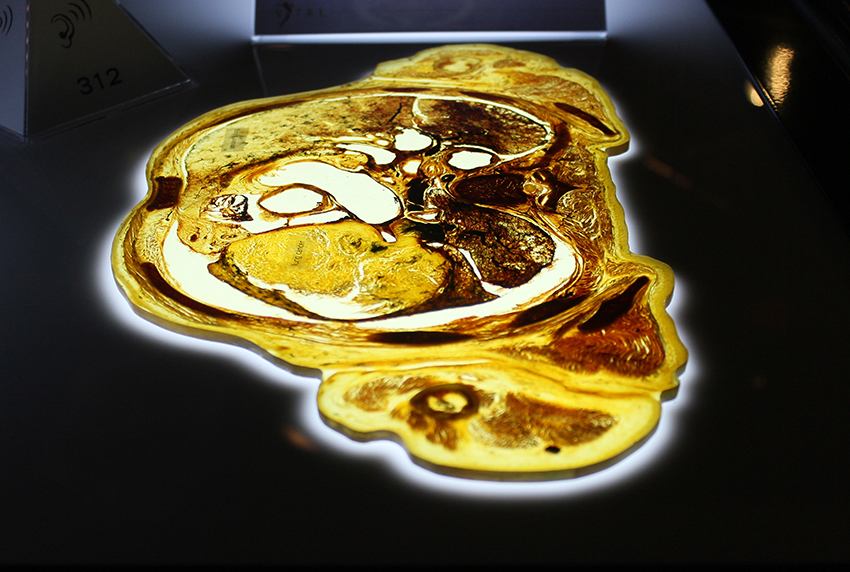
Photo by Olga Khvan
…compared with the cross-section of a thoracic cavity with lung cancer.
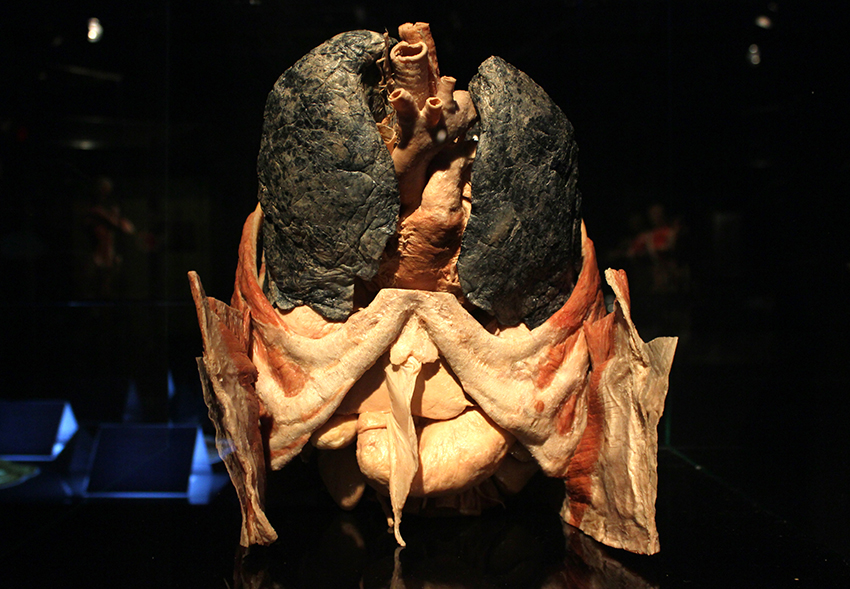
Photo by Olga Khvan
A display of a smoker’s lungs, which have been blackened from the effects of heavy tobacco use.
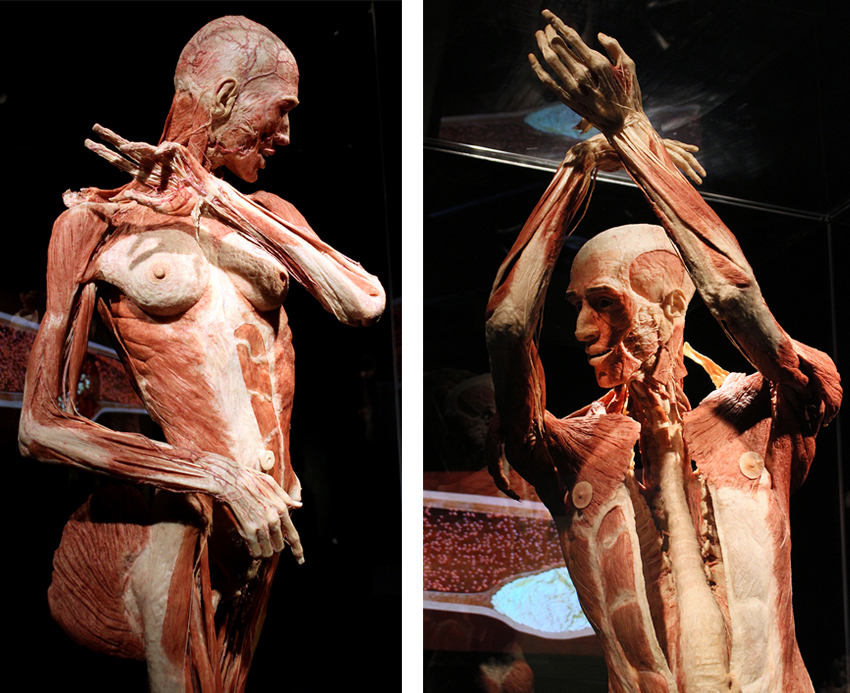
Photos by Olga Khvan
The “Female Flamenco Dancer” (left) demonstrates perfect muscular balance in motion, while the “Male Flamenco Dancer” (right) demonstrates the interplay between surface and intermediate muscles.
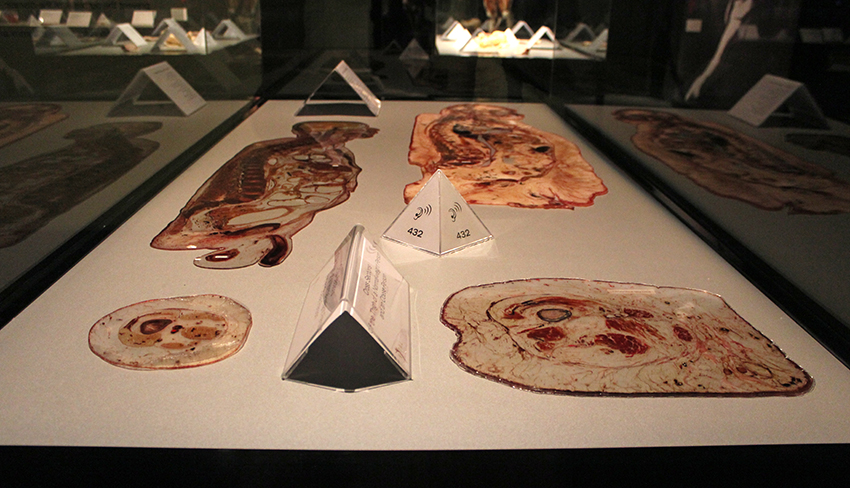
Photo by Olga Khvan
A comparison of longitudinal body slices and cross-sections of thighs reveals the effects of obesity.

Photo by Olga Khvan
A display of inner organs in their natural positions within the body.

Photo by Olga Khvan
The abdominal muscles and facial musculature of “The Winged Man” were split down the middle and folded to the side and his superficial muscles at the extremities were detached from their origins and moved sideways to offer a clear view of the structures underneath. The inner layer of his eye pigment was exposed, causing the eyeballs to appear black.
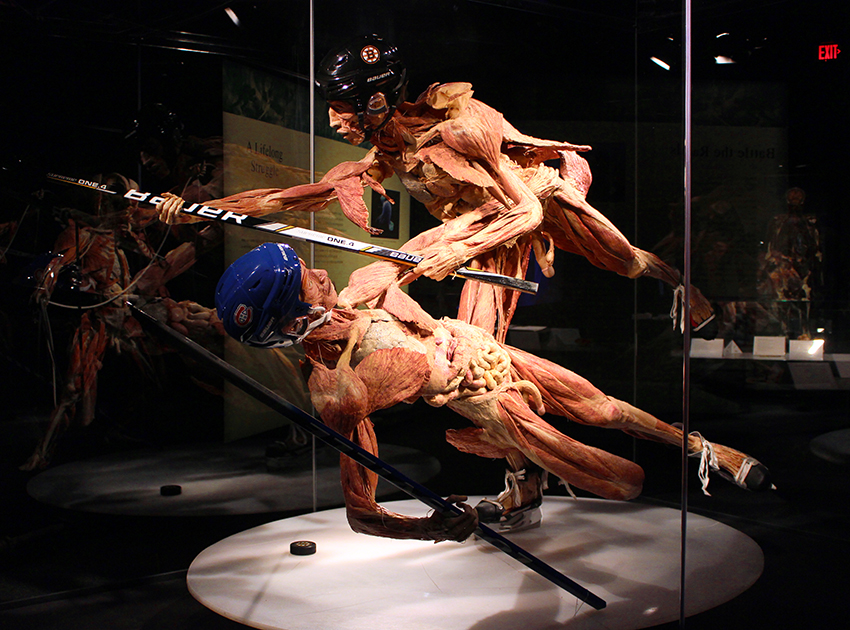
Photo by Olga Khvan
The “Hockey Players” were frozen in a moment of high-skill muscle movement. In another tribute to Boston, one of them sports a Bruins helmet.
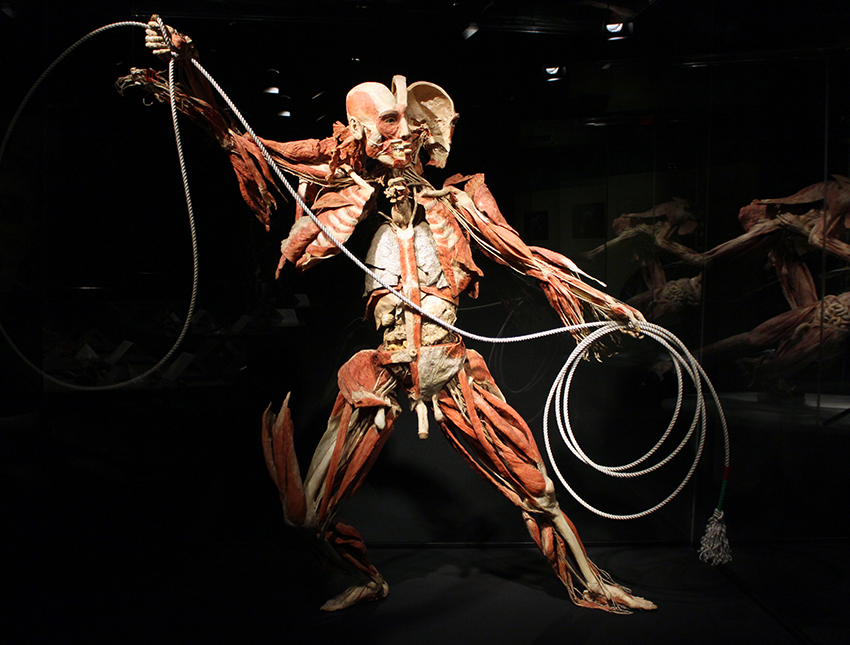
Photo by Olga Khvan
“The Lassoer” offers a clear view of the organs within the chest and abdomen.
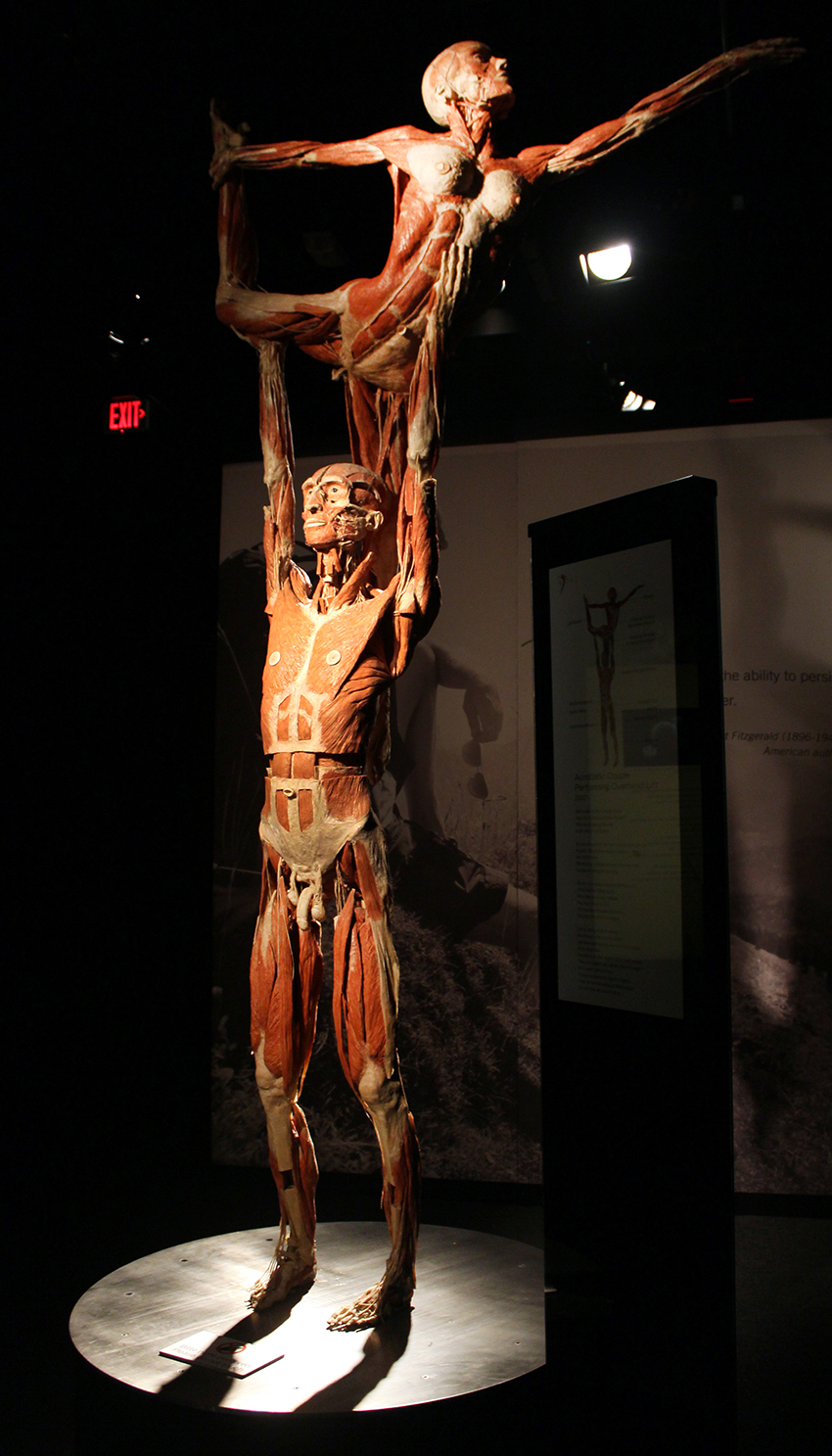
Photo by Olga Khvan
Both bodies of the “Acrobatic Couple Performing Overhead Lift” show the muscles directly beneath the skin.
The Body Worlds Vital exhibit is now open to the public on the second floor of Quincy Market at Faneuil Hall Marketplace, 4 South Market St. Admission is $22.50 for adults and $15.50 for children. For more information, visit bodyworldsboston.com.


